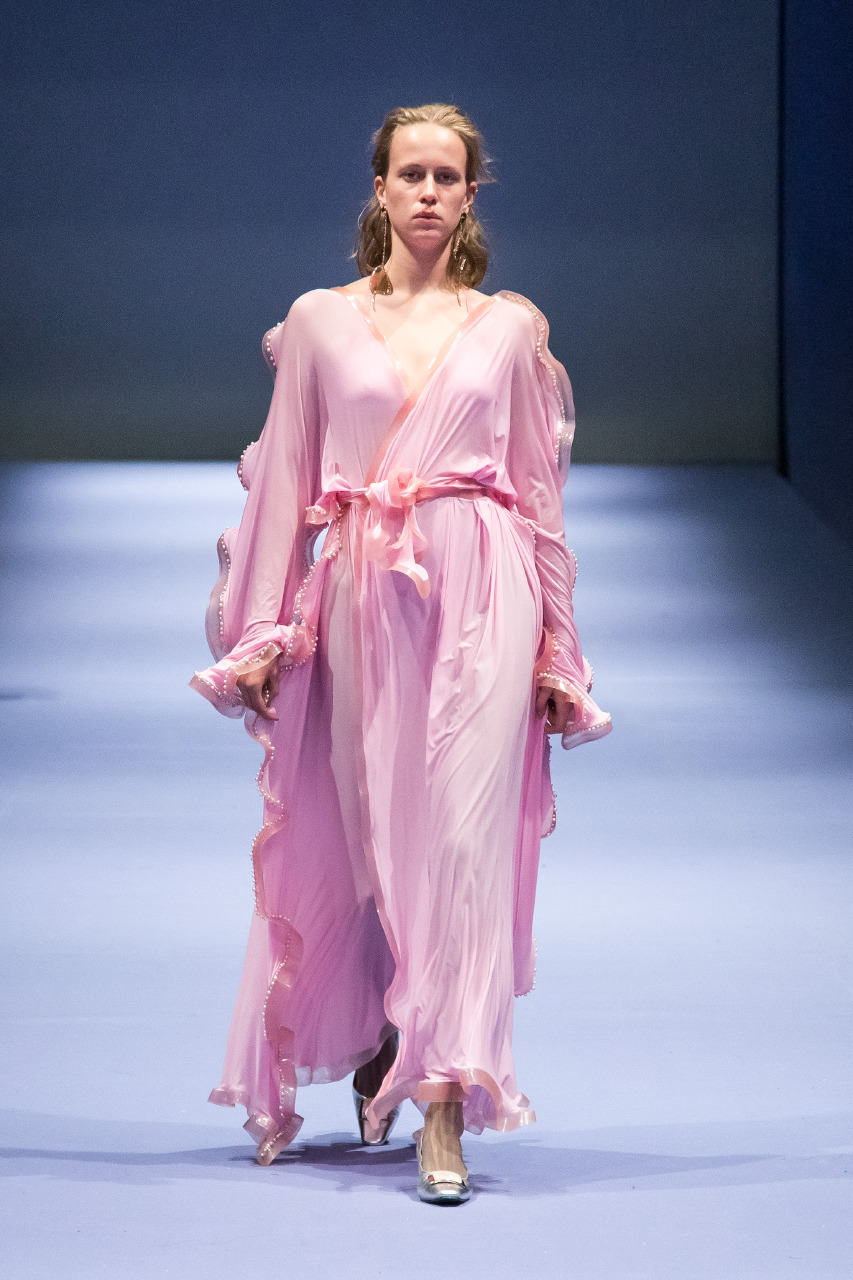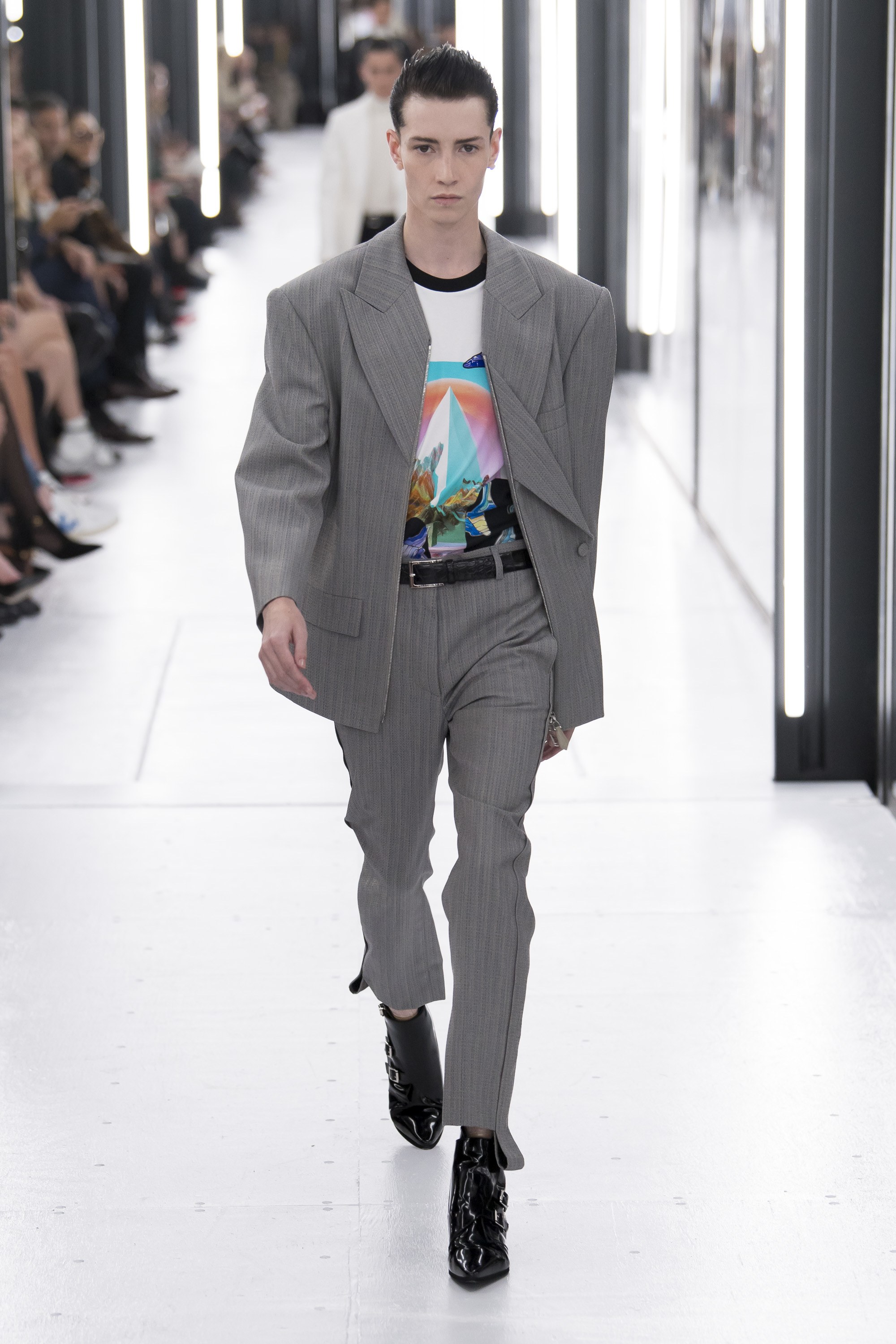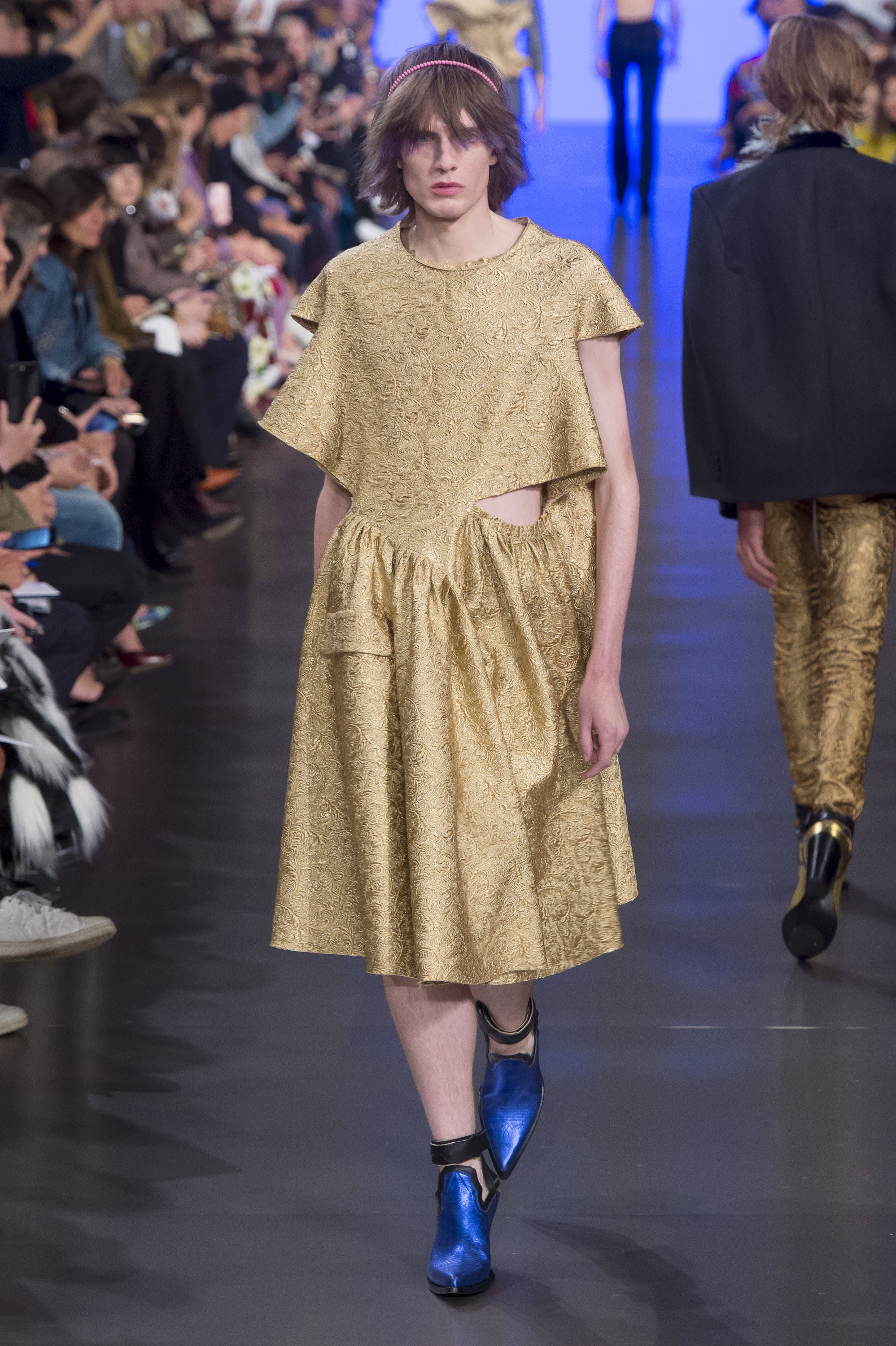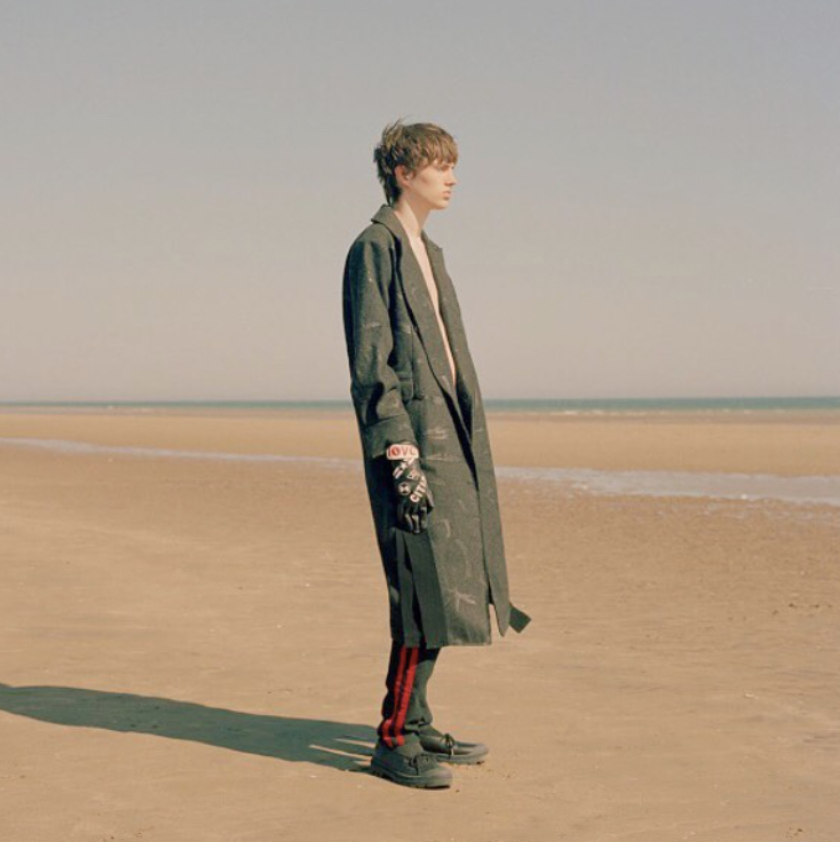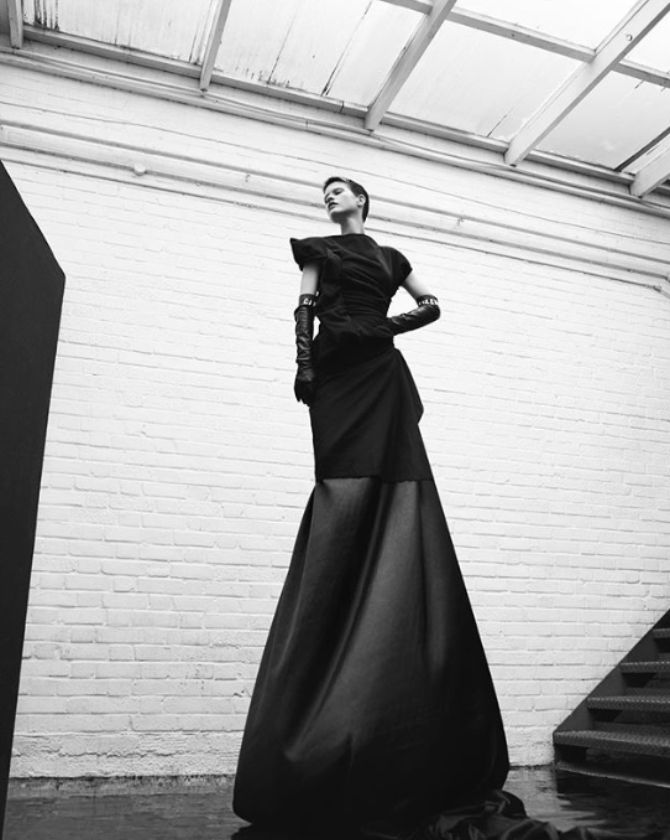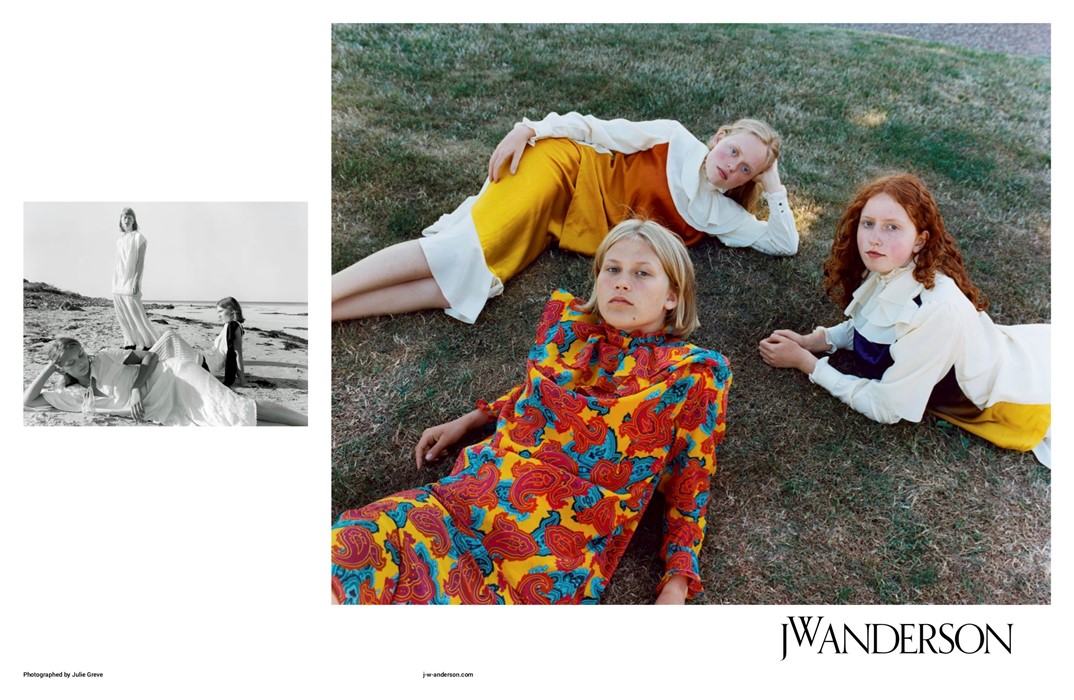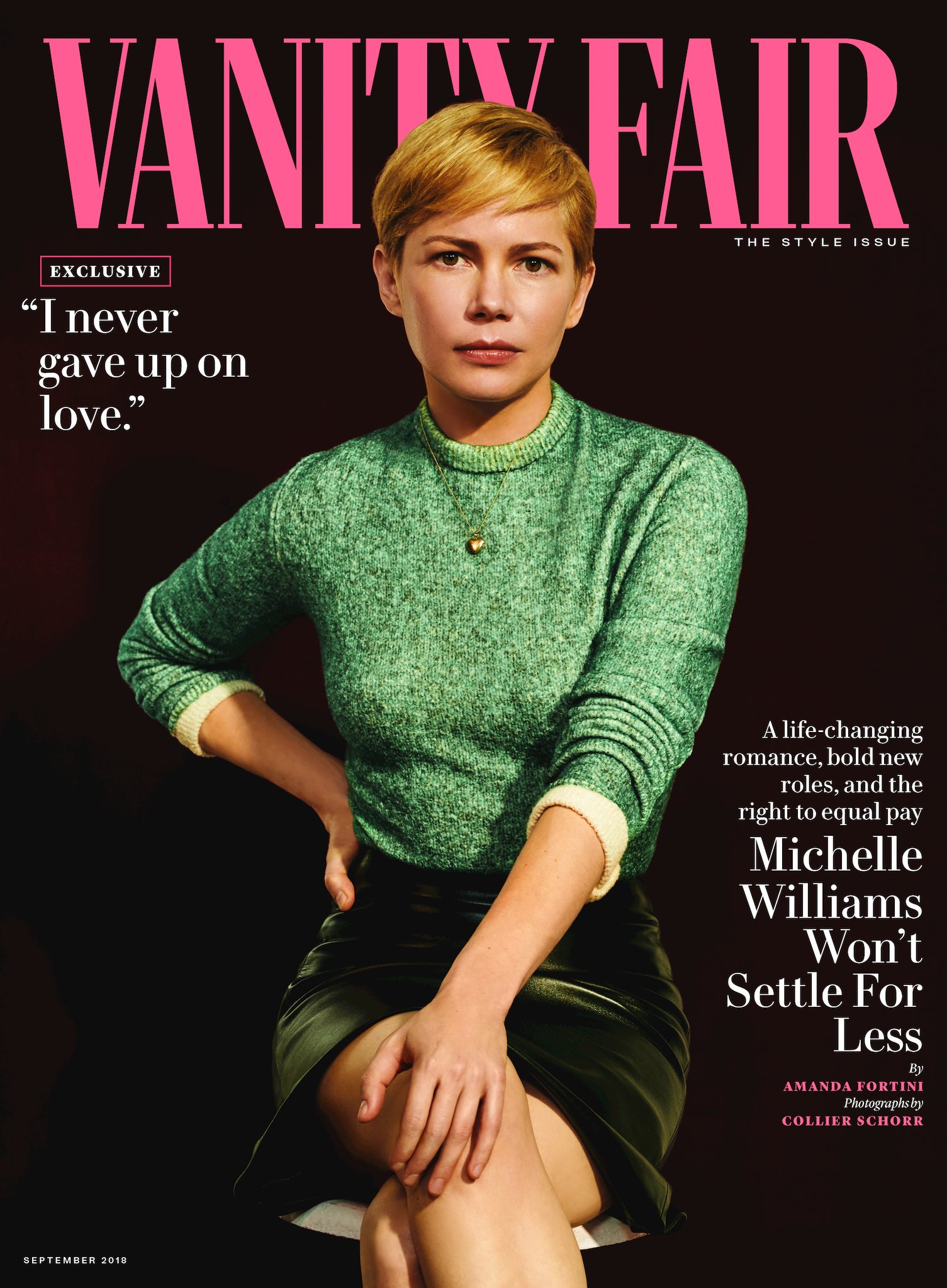From retail to resale: the trend disrupting fashion
Clicks Over Culture: The Danger of Click-bait in Fashion
Meme (/ˈmiːm/ MEEM): an idea, behaviour, or style that spreads from person to person within a culture — often with the aim of conveying a particular phenomenon, theme, or meaning represented by the meme.
Originally published on November 13, 2017 on Modern Melange
It was Richard Dawkins who first coined the word meme in his 1976 book The Selfish Gene, in order to explain how cultural information spreads through networks. Memes as cultural analogues can be likened to genes in that they too self-replicate, mutate, and respond to selective pressures. Today, nothing spreads faster than on social media, which is why the phenomenon of the internet meme (cue the “Y tho” baby) continues to have such an enormous impact on our lives, especially due to the intense proliferation of digital visual content we are constantly exposed to.We are automatically intrigued when we scroll onto a funny image followed by blunt text in form of hovering bloc letters - a welcome distraction amongst a sea of Facetuned selfies, flatlays, and food pics. Personally speaking, my favourite Instagram accounts (next to of course “The Doggist”) include Beige Cardigan, Betches, and fashion sound icon Michel Gaubert who consistently provide witty content which I consequently share onto my friends - I mean friends who laugh together stay together!Is our obsession with internet memes because they are so freakishly relatable? A simple tagline which perfectly expresses the human condition at a point in time? “This is literally me.”
Through sharing culture and online Word-of-mouth, this edited humour welcomes the potential for viral laughter and often singlehandedly adds to modern day pop-culture. Along with the visual and infectious nature of memes, it comes to no surprise that fashion is making the most of this click-bait opportunity.“I’m not sure if that’s necessarily a good thing, but everything a brand does today is about asking: “Is it bloggable? Is it shareable? If we launch this on the market, will people share this with their friends on Facebook and Instagram?” explains David Fischer, founder of Highsnobiety, in a 032c article which centred around fashion content in the digital age.Examples which best prove Fischer’s point are a plenty - most notably designed by Demna Gvasalia, head designer at Balenciaga and Vetements. Just looking at this year’s “must-haves” at Balenciaga there are those crocs, the Bernie Sanders inspired collection, thatIkea bag. Or the Louis Vuitton Stranger Things tee and not to mention the one hit wonder accessories from Dolce and Gabbana or Moschino. Even Chanel’s tongue in cheek handbags corresponding with the season’s narrative provide more than enough reason to click “share”.
Today’s luxury products motivate us to be the marketers. And how could we forget the brilliant Gucci Advertising campaign where Alessandro Michele invited a host of millennial meme-makers to promote a new collection of luxury watches through #TFW (translation: that feeling when) moments. Now does this not make fashion more accessible to all by reaching a wider audience? And like it or not, meme’s are only popular when they strike a chord within a network. They are an accurate temperature reading of the zeitgeist (and have thus been instrumental in political campaigning - for better or for worse…) which suggests they are perfectly suited for fashion, in terms of advertising and product creation. Is it not an advantage to create relevant fashion that relates to people’s lives and true situations instead of blissfully catering to select fenced off bubble for few?
However, on the other hand, the meme and its potential of going viral is based on a hyper-ephemerality quality, meaning click-bait fashions expire quickly. When you first see those Balenciaga crocs on Instagram you share that image immediately. It is fresh, bold, ironic - LOL worthy- but when the same platform crocs actually come into store 6 months in the future, they merely become a stale joke. Old news. Click bait fashion calls upon see-now buy now production and we all know that is a system that is almost impossible to successfully implement when considering the infinite stakeholders. And is it not ironic how we demand sustainability and less waste for landfill, but through our sharing culture we are only supporting throw away fads?
This leads me to ask if click bait is prioritised over culture? Fashion today is primarily made for internet consumption, not necessarily for physical form and function. The longevity of iconic design is in danger where true cultural value and innovation is overshadowed by the promise of viral status. We are reducing creative directors to meme-makers but is there even an alternative in this new environment?
The McDonaldization of Fashion
Originally published June 2016 on Modern Melange
McDonaldization, the debated concept coined by George Ritzer, is defined as “the process by which the principles of the fast-food restaurant are coming to dominate more and more sectors of American society and the rest of the world” (Ritzer, 1993). Stemming from Max Weber’s concept of bureaucracy, which entailed formal rationality, delegation, and specialised roles, McDonaldization is composed by the four elements of efficiency, calculability, predictability, and control. These elements are particularly significant to the rise of “fast fashion”: a practice whereby designer fashion innovations are copied and quickly manufactured, then sold cheaply to allow the mainstream consumer to consume current clothing trends at an affordable price (Muran, 2007). Hence, these companies including Zara and H&M are compared to “U.S. based fast food chains” for satisfying their customer’s specific needs at a low price (Ghemawat & Nueno, 2006). To elaborate, McDonald’s satisfies the need for customers to refuel, opposed to having a pleasurable meal (Berger, 1983), while fast fashion satisfies the need for customers to be trendy, opposed to purchasing a high quality, original item.
The first element of McDonaldization to address these needs is efficiency. Generally, efficiency is desired, as it offers the optimum means to reach certain ends (Ritzer, 1993). It has its advantages of allowing consumers get what they want more easily and with less effort, such as online shopping, while workers can perform their tasks more rapidly, allowing organisations to reduce cost and increase revenue. The efficiency of fast-fashion is achieved through the retailers’ understanding of the target market's wants, which is a high fashion looking garment at a price at the lower end of the clothing sector (Muran, 2007).
Therefore efficiency of fast fashion can increase demanded product diversity and innovation. For example, the manufacturing efficiency of Zara generates unique products every four weeks, opposed to the traditional industry model, which involves almost 9 months of design and production (Ghemawat & Nueno, 2006). This four-week time frame, based on Quick Response Policies, corresponds with the average time between visits of the average Zara shopper, suggesting this is also efficient for the consumer (Ghemawat & Nueno, 2006). This in turn continuously supplies diversity by generating unique products, encouraging more creativity and promising an exciting consumer shopping experience with new merchandise. My opinion therefore conflicts with Ritzer who argues, “Diversity, which many people crave, is being reduced or eliminated” through McDonaldization (Ritzer, 1993) and I would concur with the judgment that “Ritzer’s prognosis is unnecessarily gloomy” (Lyon, Taylor, & Smith, 1994).
This fast-fashion focus of lowering costs and increasing speed, results with employees being "cogs in the machine" (Barker, 1993)
Unfortunately, being able to sell £5 t-shirts and produce new material once a month comes with a heavy price. In terms of production, efficiency can lead to a severe irrationality of rationality of exploiting and dehumanising workers, in order to increase speed and lower costs (Kellner, 1999). This irrationality can lead to the development of sweatshops. Here workers lose a sense of identity and perform mundane tasks, in sometimes harsh conditions, which provide no incentive apart from a minimal financial reward. This fast-fashion focus of lowering costs and increasing speed, results with employees being "cogs in the machine" (Barker, 1993). Also, because of open trade agreements to efficiently import and export goods, virtually all manufacturing can be outsourced to cheaper labor economies to gain a competitive advantage and save on cost of production (Ghemawat & Nueno, 2006).This outsourcing has lead to a reduction in employment in various countries, as half of the total productive capacity in the clothing industry has shifted from developed countries to less developed countries (Rosen, 2002).
Due to such outsourcing and a strong focus on calculability, Zara is able to manufacture 450 million items a year. They create 11,000 unique items per annum, while competitors only generate 2,000-4,000 items (Ghemawat & Nueno, 2006). This mass-production allows them to produce six seasons opposed to four, in order for it’s stores to buy merchandise in small batches and focus on a “short-cycle” time. This reduces working capital intensity, while continuously producing new merchandise (Ghemawat & Nueno, 2006).
In the UK, more than 1,000,000,000 kg of textile is sent to landfill every year (Waste Online, 2008) and is continuously rising, due to the impact of fast fashion.
While Levitt (1987) suggests, “standards are not just threatened but are sometimes actually raised by mass producers,” Ritzer argues this focus on quantity, can compromise quality. For example, Zara products are designed to be worn no more than 10 times and then disposed of (McAfee, Sjoman, & Dessain, 2004). This increased disposal is causing a tremendous impact on our environment. In the UK, more than 1,000,000,000 kg of textile is sent to landfill every year (Waste Online, 2008) and is continuously rising, due to the impact of fast fashion. These practices are not sustainable, yet cannot be blamed solely on the elements McDonaldization, but also on our general lack of knowledge of how and where clothing is disposed of, how it is made, and what the environmental consequences are (Morgan & Birtwistle 2009).
Even with such high and damaging production rates, fashion incorporates predictability. Predictability can offer peace of mind to the consumer, by being stable and trustworthy, and can allow producers to easily predict requirements and outcomes (Ritzer, 1993). For example, the inexpensive pricing strategies of many fast-fashion companies is predictable, as they target Generation Y and Z consumers who tend to have less disposable income. Also, being ‘standardized’ might even be viewed as quite beneficial,” (Lyon et al., 1994) such as fulfilling consumer expectations of a product or service. Furthermore, predictability supports consistent branding, which allows an organization to position itself effectively in the consumers mind (Aaker, 1997). Therefore, the brand is able to connote to subjective “brand personalities” such as Abercrombie and Fitch being “casually cool” through it’s predictable product design and branding. However, consistent predictability should not lead to being dull and monotonous; for people to talk about a brand, it “should be outrageous” (Mangold & Faulds, 2009) and should therefore incorporate innovative fresh approaches! Thus, the extent of predictability can vary, and should sometimes merge with the unexpected.For example, Chanel marries its predictable, elegant design with seasonal innovations to accommodate its broad range of customers and that of the evolving fashion industry. The company relies on their predictable look of tweed and pearls, yet modifies its designs to satisfy a contemporary market, such as introducing tweed sneakers. When speaking with a Chanel representative, I was told “The brand grows and transforms…but stays true to its roots” implying that predictability can in fact become a platform for innovation and originality, again challenging Ritzer’s case, that McDonaldization stifles diversity.
The products produced by such controlled mass-production can be described as being “nothing”: a social form that is generally centrally conceived, controlled and comparatively devoid of distinctive substantive content (Ritzer, 2011).
Like predictability, the extent of control can vary within an organization, although increased control and the replacement of human with non-human technologies has become particularly apparent in the fashion industry. These new technologies are created to increase productivity, quality, standardization, and to lower cost. They are argued to have greater control over people as employees and as consumers in a McDonaldized society (Ritzer, 1993). Zara has turned its strict control strategies over garment factories into their greatest competitive advantage (CNN, 2001). They are centrally run in La Coruña, Spain, and rely on worldwide orders from handheld devices, a global tracking system, barcoded hanging garments, and robotic carousels, which handle 45,000 folded garments per hour (Ghemawat & Nueno, 2006). This is a shift from human to non-human technologies, but it leads to manufacturing efficiencies, which are necessary to compete with other brands in the market and to satisfy consumer demands. The products produced by such controlled mass-production can be described as being “nothing”: a social form that is generally centrally conceived, controlled and comparatively devoid of distinctive substantive content (Ritzer, 2011).
Therefore, this productivity and cost-reduction approach is not suitable for all; low price and speed may be willingly sacrificed for a unique, individual, and quality oriented product (Teboul, 1988). This approach may focus on producing a more “something” product, which is indigenously conceived and controlled social form that is comparatively rich in distinctive substantive content (Ritzer, 2011).
The Internet has revolutionized the relationship between brand and consumer, where consumers can connect to brands wherever and whenever. Even after product purchase, customers may “remain aggressively engaged, publicly promote or attack the products they’ve bought, collaborate in the brand’s development, and challenge and shape their meaning” (Edelman, 2010). This hands power to the consumer as they have the ability to control the direction and development of a brand simply through word of mouth. This word-of-mouth marketing has become an “over-riding industry preoccupation for marketers” (Smith & Zook, 2011) and is most prevalent through social media.
Social media is the “group of Internet-based applications that build on the ideological & technological foundations of web 2.0 and that allow the creation and exchange of user generated content (UGC)” (Kaplan & Haenlein, 2009).Here consumers can find specific information and make decisions regarding a brand or product, as social media is considered more trust worthy than traditional company-sponsored elements (Mangold & Faulds, 2009). ‘Social Media is the biggest change since the industrial revolution’ (Arthur, 2011) as platforms including Facebook and Twitter are putting customers back at the center of the organization and are democratizing the phenomena of marketing (Smith & Zook, 2011). Here billions have the opportunity to share opinions, write reviews, and directly engage with an organization.
Organizations also depend on these digital platforms for communication as they can reach, engage, and widen their network of consumers, as well as conduct valuable market research. They can help customers by sharing expertise and listening to the vocal elements within a market. (Smith & Zook, 2011) This element of being able to help consumers is what Peter Drucker believes is the only reason any company exists (Smith & Zook, 2011). Moreover, brands are able to share and provide experiences through social media.
Not only does this associate to the control of non-human technologies on the consumer, (Ritzer, 1993) but this also suggests that the consumers themselves are working as marketers for the brand.
Social Media has created a “trialogue” (Earls, 2002) of interaction between the brand, consumers, and opinion leaders. This generates quicker and cheaper feedback for marketers to learn about consumers, as sometimes “the networked market knows more than companies do about their own products” (Levine et al, 2000). Also, it allows consumers to conduct information and voice complaints or praise to an organisation. The trialogue can:
Invite and allow customers as stakeholders to engage at a higher level by creating UGC or fully blown collaborative co-creation to deliver new products & solutions (Smith & Zook, 2011).
This is especially relevant to opinion leaders as they can influence the everyday consumer and generate “earned media” for companies, such as creating websites supporting a brand or product (Edelman, 2010). In fashion, bloggers have arguably become the most dominant opinion leaders. These ordinary consumers have gained mass audiences through their application of UGC and reviews, resulting in a “Megaphone Effect” through the Web (McQuarrie, Miller, & Phillips, 2013). Examples include Anna dello Russo and The Blonde Salad, who have become luxury brand evangelists and ambassadors, and strongly contribute to co-creation of value for various brands (Smith & Zook, 2011).
Smith and Zook (2011) suggest, “Social media helps to build relationships with customers and prospects listening, rather than shouting and broadcasting messages at them.” However, as many blogs have gained mass audiences, brands such as Moschino capture this opportunity and are sending merchandise to bloggers without charge to promote themselves. This contradicts the new mindset of “more listening less shouting” on social media. As bloggers promote a brand’s product, they transform from being individual opinion leaders to ‘Instagramed’ advertisements. When seeing these commercialised blog posts it makes me feel disappointed and leads me to disagree with the idea that marketing is completely democratised through social media. Opinion leaders seem to morph with an organisation, where the “trialogue” is becoming an uncomfortable dialogue between an organisation and their blogging “opinion” leader with the consumer. Additionally, unique trends and creative thought generated by these blogs are being controlled by organisations, where almost all popular bloggers are wearing the same predictable clothing.
Mobile marketing is also an element to consider when deciding if power has shifted to the consumer or remains with the organisation. Consumers can be “constantly connected using a personal mobile device”, allowing them to gather and share information instantly (Kaplan, 2011). This suggests power lies with the consumer as they can continuously shape the perception of a brand.Also they can initiate pull communications by opting to receive information by desired organisations. For example, I willingly opt to receive iPhone notifications from Vogue. This indicates I’m a patron of Vogue, as I have given permission to be contacted and have provided my own personal information (Kaplan, 2011). On the other hand, I am a victim to Vodafone, as the company has my information and sends me unwanted messages through relentless push communications (Kaplan, 2011).
These mobile relationships create huge potential for such organisations. They are able to obtain geo-demographic and behavioural statistics and have the potential to track exposure and effectiveness of their activities (Kaplan, 2011). This clearly hands back power to the organisation and reminds me of George Orwell’s 1984 with “Big Brother” watching. I think these practices are an invasion of privacy, but at this point, all of us should be aware that everything we do on our mobiles and on the Internet is not private. While our own security, privacy and trust are compromised; the efficiency of future products and services can be improved through this substantial market research, benefitting both consumer and organisation.
Ultimately, digital marketing and McDonaldization can be viewed as both a blessing and a curse. They offer the potential for individuals, organisations, and strategies in society to progress into the future, to become more efficient and more democratised. However, they also result in dramatic setbacks such as the invasion of privacy, due to mobile marketing and the dehumanization of employees, due to the obsession of reaching certain ends.
Together, they allow organisations such as Zara, “to be the most innovative, yet devastating retailer[s] in the world” (CNN, 2001).
ShowStudio: Iris van Herpen A/W 19 Haute Couture
ShowStudio: Stefan Cooke S/S 20
Onto a Sustainable Future: The 8th Future Fabric Expo London Inspires
The Sustainable Angle’s Future Fabrics Expo is the largest dedicated showcase of sustainable materials for the fashion and textile industry in Europe.
Originally published on Austrianfashion.net February 2019
According to the Circular Fibres Initiative and the Ellen MacArthur Foundation, global clothing production has nearly doubled over the past 15 years, dramatically straining our Earth’s finite resources. To add perspective, by only creating 1 kilogram of cotton for a single t-shirt, 20,000 litres of water is required. Additionally, the Boston Consulting Group and Global Fashion Agenda have calculated that overall apparel consumption will continue to rise by 63% - from 62 million tons in 2017 to 102 million tons in 2030, underscoring the uncompromising need to commit to sustainable practice. One primary solution in addressing sustainable fashion production is by questioning materials. Often considered the first step in a designer’s creative journey, being able to understand the complexities behind a chosen fabric is an excellent starting point when striving to apply a responsible approach in the creation of fashion products.
© Future Fabric Expo
A dominant pioneer championing a “Material Renaissance” in fashion is The Sustainable Angle(TSA). The UK-based not-for-profit organisation was founded by Nina Marenzi, after having completed her Master’s dissertation in sustainable agriculture at Imperial College. Today TSA is responsible for initiating and supporting a variety of worthwhile projects, which aim to minimise the overall environmental impact of the fashion industry and wider society. It counts London College of Fashion lecturer Amanda Johnston and Supermodel Arizona Muse to its advisory board and directly collaborates with an impressive roster of influential global fashion brands.
The Sustainable Angle is celebrated for hosting the annual Future Fabrics Expo, which saw its 8th year last week. The Expo, which featured innovations by the Lenzing Group, Hallotex and G-Star Raw among others, provided deep insights into how the dangerous environmental impacts of fashion can be reduced through textile innovations, as well as through unique approaches to transform design practices throughout the value chain. The Expo is the largest dedicated showcase of sustainable materials for the fashion and textile industry in Europe, and features a substantial collection of commercially-available fabrics from suppliers who are actively pushing forward innovative solutions for a lower environmental footprint. The intention is to inspire and educate established and emerging designers, as well as other innovators in the industry, interested in the latest developments in sustainable fabrics. It promotes the growing need for a more multifaceted approach in material selection and manufacturing, as current global fibre demand lacks in diversity.
In order to inspire a broader textile fibre matrix, the Expo featured a carefully curated range of natural and man-made fibres and fabrics, which included protein and cellulose-based fibres as well as recycled synthetic polymers. Some of the most innovative fabrics on display included natural materials made from agricultural and food industry by-products. Banana fibre is for example one of the strongest natural fibres, ideal for producing durable fabrics, which equally offer flexibility and softness. Here the fibre is extracted from the stems of a banana plant and in turn reduces overall waste, as it is a by-product from the banana harvest. Offset Warehouse utilises 100% banana fibre by producing a premium black and white woven fabric. Orange Fiber is another leading example of transforming food industry by-products. The company is aiming to rescue a part of the 700,000 tons of orange peels, which are scrapped from Italian juice production each year, by transforming them into a luxurious, silky smooth fabric. The material has already earned its desirability and legitimacy as luxury brand Salvatore Ferragamo has previously created a capsule collection using the material.
Another prominent material development at the Expo was the growing emphasis on vegan leather. Nova Kaeru has for example pioneered beLEAF, made from sustainably sourced leaves and results in a material which is tough, resistant, and breathable- well suited for footwear. Additionally, Vegea creates leather from grape marc, resulting in dramatic, Bordeaux tinted shades. Piñatex also produces a fruit-based leather, specifically from pineapple leaf fibres, transforming part of the fruit which cannot be eaten, and is often discarded. Next to displaying thousands of unique materials, the Expo has featured an educational seminar programme with talks by Prof. Dilys Williams from The London College of Fashion’s Centre for Sustainable Fashion, Lukas Fuchs from the Ellen MacArthur Foundation, and Edwina Ehrman curator of the Victoria and Albert Museum’s exhibition Fashioned from Nature, among others.
Despite the many environmental challenges facing this generation, Ehrman expressed her optimism for the fashion industry becoming more sustainable. As it nurtures a vibrant design community, fashion holds the potential to be transformed into a positive force, and through creativity, can inspire collective action to achieve common sustainability goals. Ehrman urged the audience to learn from the Expo, and to care about which materials we choose to wear and support. Question how they are made, where they are coming from. Align our values with our consumption choices, in order to restore full confidence in our purchases. By valuing materials, we sustain a deeper connection with fashion and our wardrobes, which should feature non-disposable pieces part of our own stories. Ben Gleisner of Connecting Good shared the optimism towards a sustainable future. He stated that as fashion’s extensive supply chain has a massive direct effect on communities, the workforce, animal welfare, the environment on land and sea-when changes are made in consumption and production, huge impacts can be immediately observed.
The Future Fabric Expo not only challenged current practices and offered attainable solutions, it left the audience feeling hopefully and inspired to act. Also creatively, the collections of unique materials offered the potential for truly groundbreaking future design. The movement towards a fully sustainable future is well under way, bridging together the best of science and art, technology and fashion, and a spectacular renaissance in appreciating a growing spectrum of materials.
Save the date:
9th Future Fabrics Expo
29 - 30 January 2020, London
Christian Dior: ‘Designer of Dreams’ Dazzles London
Originally published on Achtung Digital on February 5th, 2019
In particularly dark times set off by the likes of global political turbulence, the very real threats of climate change, and a strained environment, it is only natural to desire some form of escape- a distraction perhaps by scrolling through Instagram or binging on the next must watch Netflix series. However, one of the surest ways of remedying an at times ugly reality, can be the full immersion into a beautiful dream.
The extraordinary ‘Christian Dior: Designer of Dreams’, now on show at London’s Victoria and Albert Museum, promises just that – a journey far away from the Breaking News doom and gloom and towards a pure celebration of unabashed glamour and unrestricted imagination. It is the museum’s biggest fashion exhibition since “Alexander McQueen: Savage Beauty” in 2015, and is the most comprehensive exhibition on the House of Dior ever staged in the UK. Based on the major exhibition Christian Dior: Couturier du Reve, organised by Musee des Arts Decoratifs Paris, Designer of Dreams is reimagined for the V&A showcasing over 500 objects, including 200 rare haute couture garments alongside accessories, fashion photography, film, and vintage perfumes.
Curated by Oriole Cullen, the exhibition ranges from 1947 to present day, tracing the rich history and impact of one of the 20th century’s most influential couturiers, and the six artistic directors who have succeed him. Dior’s radical introduction of the New Look and the iconic Bar Suit, provided a fresh, feminine alternative to the utilitarian, masculine style of women’s clothing after the Second World War. Through a tightened waist evoking an upside down corolla silhouette, Dior celebrated the female form and in turn reinvigorated the post war Parisian fashion industry. “The influence of Christian Dior’s design was all-pervasive and helped to define an era,” says Cullen.
What distinguishes the V&A’s retrospective from the Paris original is a gallery showcasing Dior’s admiration for the British culture- from his love of Saville Row tailored suits to proud British homes and gardens. “There is no other country in the world, besides my own, whose way of life I like so much,” Dior once said. “I love English traditions, English politeness, English architecture. I even love English cooking.” As well as touching upon his first UK fashion show taking place at London’s Savoy Hotel in 1950, the exhibition highlights the creative collaborations with British Manufactures includes Dents, Rayne, Lyle and Scott, and Mitchel Maer. Centre stage is however held by the ivory, gold embellished, off-shoulder gown the couturier designed for Princess Margaret’s 21st birthday, immortalised by the lens of Cecil Beaton. Especially poignant due to the far reaching shadows of the Brexit Chaos, the gallery exemplifies the mutually beneficial relationship between British and French craft. Following the anglophile gallery, the exhibition introduces the audience into subsequent interpretations of M. Dior’s signature, featuring original pieces by Yves Saint Laurent, Marc Bohan, Gianfranco Ferré, John Galliano, Raf Simons, and Maria Grazia Chiuri, exemplifying how successful design is timeless- equally modern for any generation.
Apart from the gowns themselves, the showstoppers of Designer of Dreams are the exquisite sets designed by Nathalie Crinere. From the black lacquered staircase guiding visitors into the newly opened Sainsbury Gallery, to the façade of Dior’s 30 Avenue Montaigne store, Blenheim Palace during the Belle Époque, or the enchanted garden with paper cut-out wisteria hanging from the ceiling, the sets bring the legacy of Dior and each couture piece to life.
While it could have been enriching for more socio-political context, complimenting the gorgeous gowns throughout history, the exhibition triumphed in beauty. Designer of Dreams prevails as an antidote to the mundane and presents a very strong case as to why fashion matters- not because of form or function- but because of our deep desire for freedom and fantasy.
The exhibition Christian Dior: Designer of Dreams runs from 2 February – 14 July 2019. https://www.vam.ac.uk/
Photos by Adrien Dirand.
HEAD Genève: A Superior Interdisciplinary Education
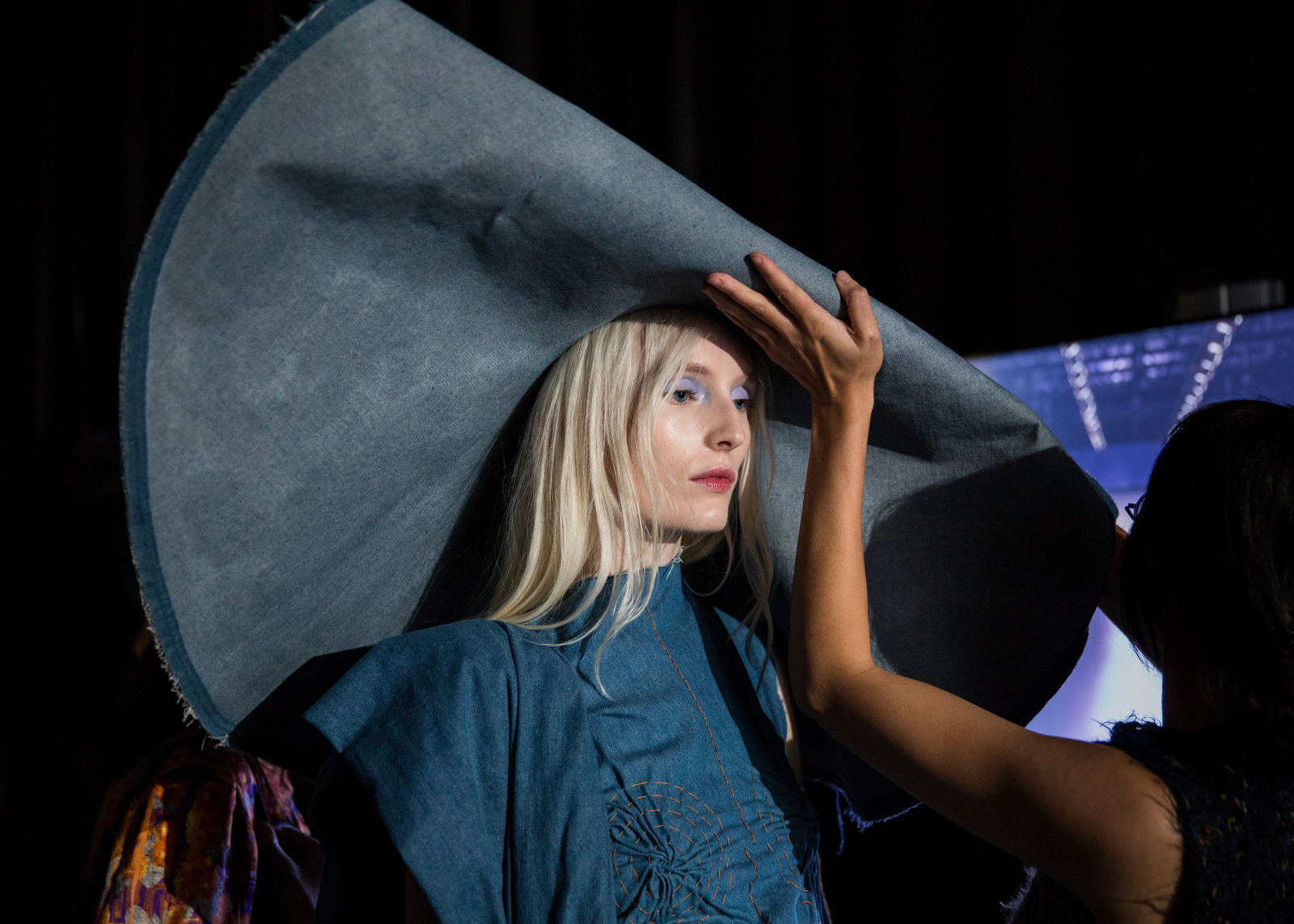 Graduate collections are inherently special. It is a privilege to witness the debut of a fresh generation onto the global fashion stage, within a pulsing atmosphere of raw anticipation, pride, youthful anxiety and relief; distinct to such outstanding occasions. Here the creative output, be it clothing or accessories, is defined by the freedom of unrestrained imagination and blossoming craftsmanship, generated over years of practice and guidance from patient lecturers. Strongest collections offer an authentic, bold point of view leaving a memorable impression on the audience.Being based in London, home to the Royal College of Art, Central Saint Martin's and the London College of Fashion among others, I am spoiled to be within the heart of fashion higher education, however it is particularly rewarding to travel abroad and gain insight into the approach of other leading global arts institutions. Earlier this month, I had the pleasure of visiting HEAD Geneva before for its annual Fashion Show and was extremely impressed by not only the state-of-the-art facilities and renowned staff, but its holistic ethos which uniquely prioritises an interdisciplinary approach across the art programmes.
Graduate collections are inherently special. It is a privilege to witness the debut of a fresh generation onto the global fashion stage, within a pulsing atmosphere of raw anticipation, pride, youthful anxiety and relief; distinct to such outstanding occasions. Here the creative output, be it clothing or accessories, is defined by the freedom of unrestrained imagination and blossoming craftsmanship, generated over years of practice and guidance from patient lecturers. Strongest collections offer an authentic, bold point of view leaving a memorable impression on the audience.Being based in London, home to the Royal College of Art, Central Saint Martin's and the London College of Fashion among others, I am spoiled to be within the heart of fashion higher education, however it is particularly rewarding to travel abroad and gain insight into the approach of other leading global arts institutions. Earlier this month, I had the pleasure of visiting HEAD Geneva before for its annual Fashion Show and was extremely impressed by not only the state-of-the-art facilities and renowned staff, but its holistic ethos which uniquely prioritises an interdisciplinary approach across the art programmes. Established in 2006 from the merger between the Ecole supérieure des beaux-arts and the Haute école d’arts appliqués, HEAD Geneva offers both Bachelor’s and Master’s programmes within the fine arts, cinema, spatial design, graphic and media design, jewellery, watch, accessory design and of course fashion. It is remarkable how this public university (being one of the few leading fashion institutions not to charge for education) boasts such a high level of infrastructure, facilities and teaching. Its newly opened campus, designed by architect Georges Addor in 1956 is even classified and registered for Geneva's heritage due to its global influence on modernist and rationalist architecture.
Established in 2006 from the merger between the Ecole supérieure des beaux-arts and the Haute école d’arts appliqués, HEAD Geneva offers both Bachelor’s and Master’s programmes within the fine arts, cinema, spatial design, graphic and media design, jewellery, watch, accessory design and of course fashion. It is remarkable how this public university (being one of the few leading fashion institutions not to charge for education) boasts such a high level of infrastructure, facilities and teaching. Its newly opened campus, designed by architect Georges Addor in 1956 is even classified and registered for Geneva's heritage due to its global influence on modernist and rationalist architecture. Apart from its notable setting, what I admired about HEAD was how it not only encouraged interdisciplinary education, but how this ethos is built directly into a programme's syllabus through collaborative projects within the university and with outside industry partners. Daily, students are automatically confronted with complimenting departments within the campus and are pushed to experiment outside their respective fields. For example a fashion student may experiment in creating ceramics, jewellery, or metal works, thus strengthening a fundamental understanding of materials and technical skills. As a result, graduates gain proficiency in production as well as innovative design, as dramatically displayed at the annual défilé.
Apart from its notable setting, what I admired about HEAD was how it not only encouraged interdisciplinary education, but how this ethos is built directly into a programme's syllabus through collaborative projects within the university and with outside industry partners. Daily, students are automatically confronted with complimenting departments within the campus and are pushed to experiment outside their respective fields. For example a fashion student may experiment in creating ceramics, jewellery, or metal works, thus strengthening a fundamental understanding of materials and technical skills. As a result, graduates gain proficiency in production as well as innovative design, as dramatically displayed at the annual défilé. The annual défilé has established itself as a prominent event representative of the contemporary Swiss fashion ecosystem. It showcases the talent of BA and MA graduates in Fashion and Accessory Design where, in front of an audience of over 2,000 guests, students have the opportunity to win prizes including the 1) La Redoute x HEAD Prize, where the selected winner is awarded an opportunity to develop a capsule collection for La Redoute, 2) the HEAD Bachelor’s Bongénie Prize worth CHF 5,000 and 3) the HEAD Master’s Mercedes-Benz Prize worth CHF 10,000. The prizes were awarded by a panel of esteemed judges, who this year included Olivier Theyskens (President of the jury), Camille Bidault Waddington, Sylvette Boutin-Lepers, Laura Catrina, Anders Edström, Sara Maino, Fabrice Paineau, and Aurélie Popper.
The annual défilé has established itself as a prominent event representative of the contemporary Swiss fashion ecosystem. It showcases the talent of BA and MA graduates in Fashion and Accessory Design where, in front of an audience of over 2,000 guests, students have the opportunity to win prizes including the 1) La Redoute x HEAD Prize, where the selected winner is awarded an opportunity to develop a capsule collection for La Redoute, 2) the HEAD Bachelor’s Bongénie Prize worth CHF 5,000 and 3) the HEAD Master’s Mercedes-Benz Prize worth CHF 10,000. The prizes were awarded by a panel of esteemed judges, who this year included Olivier Theyskens (President of the jury), Camille Bidault Waddington, Sylvette Boutin-Lepers, Laura Catrina, Anders Edström, Sara Maino, Fabrice Paineau, and Aurélie Popper.  Although all participants delivered a high level of craftsmanship and bold experimentation, the selected winners were Josiane Martinho Miguel and Quynh Bui.
Although all participants delivered a high level of craftsmanship and bold experimentation, the selected winners were Josiane Martinho Miguel and Quynh Bui. Josiane Martinho Miguel was awarded the HEAD Bachelor’s Bongénie Prize for her collection titled “Am I my soul’s sleeping-bag?” which was deeply poetic in how it linked urban wearability with the excess of detached objects. The unnatural bulges which swelled throughout her silhouettes drew a parallel to Rei Kawakubo’s iconic lumps and bumps collection for Comme des Garçons. The collection was abstract in its deconstruction but was handled with regal finesse and maturity which is rare in a Bachelor's collection.
Josiane Martinho Miguel was awarded the HEAD Bachelor’s Bongénie Prize for her collection titled “Am I my soul’s sleeping-bag?” which was deeply poetic in how it linked urban wearability with the excess of detached objects. The unnatural bulges which swelled throughout her silhouettes drew a parallel to Rei Kawakubo’s iconic lumps and bumps collection for Comme des Garçons. The collection was abstract in its deconstruction but was handled with regal finesse and maturity which is rare in a Bachelor's collection.
 Quynh Bui was awarded a double prize including the Master’s Mercedes-Benz Prize and La Redoute Prize with her collection titled FADE. "I love Quyhn’s universe, her architectural approach of the garment, the excessiveness of volumes. This gives a singularity to her creations and I am delighted that La Redoute is supporting it by editing a capsule collection for the Summer 2019,"expressed Sylvette Boutin Lepers, Head of Partnerships Creators & Image at La Redoute. Additionally, Olivier Theyskens remarked on Bui’s "audacity and sensitivity" and hopes the prize will "accompany her in the realisation of her future projects."Bui offered a feminine interpretation on male denim workwear prevalent in the United States during the mining age in the 19th and 20th centuries. The collection, inspired by the history of denim, featured authentic delicacies of wear and tear was overall stimulating due to the contrast of feminine softness and masculine shaping. The chosen palette was largely traditional based on classic denim shades, save for tangy punches of bright oranges, capturing a loud modern aesthetic.
Quynh Bui was awarded a double prize including the Master’s Mercedes-Benz Prize and La Redoute Prize with her collection titled FADE. "I love Quyhn’s universe, her architectural approach of the garment, the excessiveness of volumes. This gives a singularity to her creations and I am delighted that La Redoute is supporting it by editing a capsule collection for the Summer 2019,"expressed Sylvette Boutin Lepers, Head of Partnerships Creators & Image at La Redoute. Additionally, Olivier Theyskens remarked on Bui’s "audacity and sensitivity" and hopes the prize will "accompany her in the realisation of her future projects."Bui offered a feminine interpretation on male denim workwear prevalent in the United States during the mining age in the 19th and 20th centuries. The collection, inspired by the history of denim, featured authentic delicacies of wear and tear was overall stimulating due to the contrast of feminine softness and masculine shaping. The chosen palette was largely traditional based on classic denim shades, save for tangy punches of bright oranges, capturing a loud modern aesthetic. Having evolved to become the norm for graduate collections, sustainability played a central role also in Bui's collection. Here she recycled second-hand clothing in order to bring awareness to pollution as well as to add a nostalgic gesture for the previous wearer.
Having evolved to become the norm for graduate collections, sustainability played a central role also in Bui's collection. Here she recycled second-hand clothing in order to bring awareness to pollution as well as to add a nostalgic gesture for the previous wearer. In addition to the winners, two of my personal favourites included Maxime Delaye Augagneur and Manon Autié-Naty who executed a high caliber of innovation met with commercial viability. Autié-Naty presented a collection which would surely be coveted by modern "insta-girls" of today, similar to the wide-eyed clientele currently served by Giambattista Valli. Her collection had a light, artificial frothiness to it in shades of cotton candy pink and soft neons which made it delicious. Likewise, commenting on a traditionally feminine aesthetic was Delaye Augagneur who wove in a religious narrative throughout. As well as nostalgic through shrill 1980s references, it was provocative, as her collection featured a model representative of the Virgin Mary in white lace who inched down the runway as fellow models overtook her. Commentary on the speed of modern life?
In addition to the winners, two of my personal favourites included Maxime Delaye Augagneur and Manon Autié-Naty who executed a high caliber of innovation met with commercial viability. Autié-Naty presented a collection which would surely be coveted by modern "insta-girls" of today, similar to the wide-eyed clientele currently served by Giambattista Valli. Her collection had a light, artificial frothiness to it in shades of cotton candy pink and soft neons which made it delicious. Likewise, commenting on a traditionally feminine aesthetic was Delaye Augagneur who wove in a religious narrative throughout. As well as nostalgic through shrill 1980s references, it was provocative, as her collection featured a model representative of the Virgin Mary in white lace who inched down the runway as fellow models overtook her. Commentary on the speed of modern life?
 In terms of trends, the graduates referenced amongst others Marrine Serre through reconstructed scarf dresses, Calvin Klein by Raf Simmons and his idealised Americana, and Koche through the intellectualised appropriation of football culture. Of course the current shaping of Balenciaga and the neon undercurrent of Prada were also popular. The early 2000s, logomania, athleisure and urban street style continued to play a dominant role sparking, in particular, a youthful interpretation on modern masculinity, explored convincingly by Aurélien Beltramo and her collection #chestday.
In terms of trends, the graduates referenced amongst others Marrine Serre through reconstructed scarf dresses, Calvin Klein by Raf Simmons and his idealised Americana, and Koche through the intellectualised appropriation of football culture. Of course the current shaping of Balenciaga and the neon undercurrent of Prada were also popular. The early 2000s, logomania, athleisure and urban street style continued to play a dominant role sparking, in particular, a youthful interpretation on modern masculinity, explored convincingly by Aurélien Beltramo and her collection #chestday.
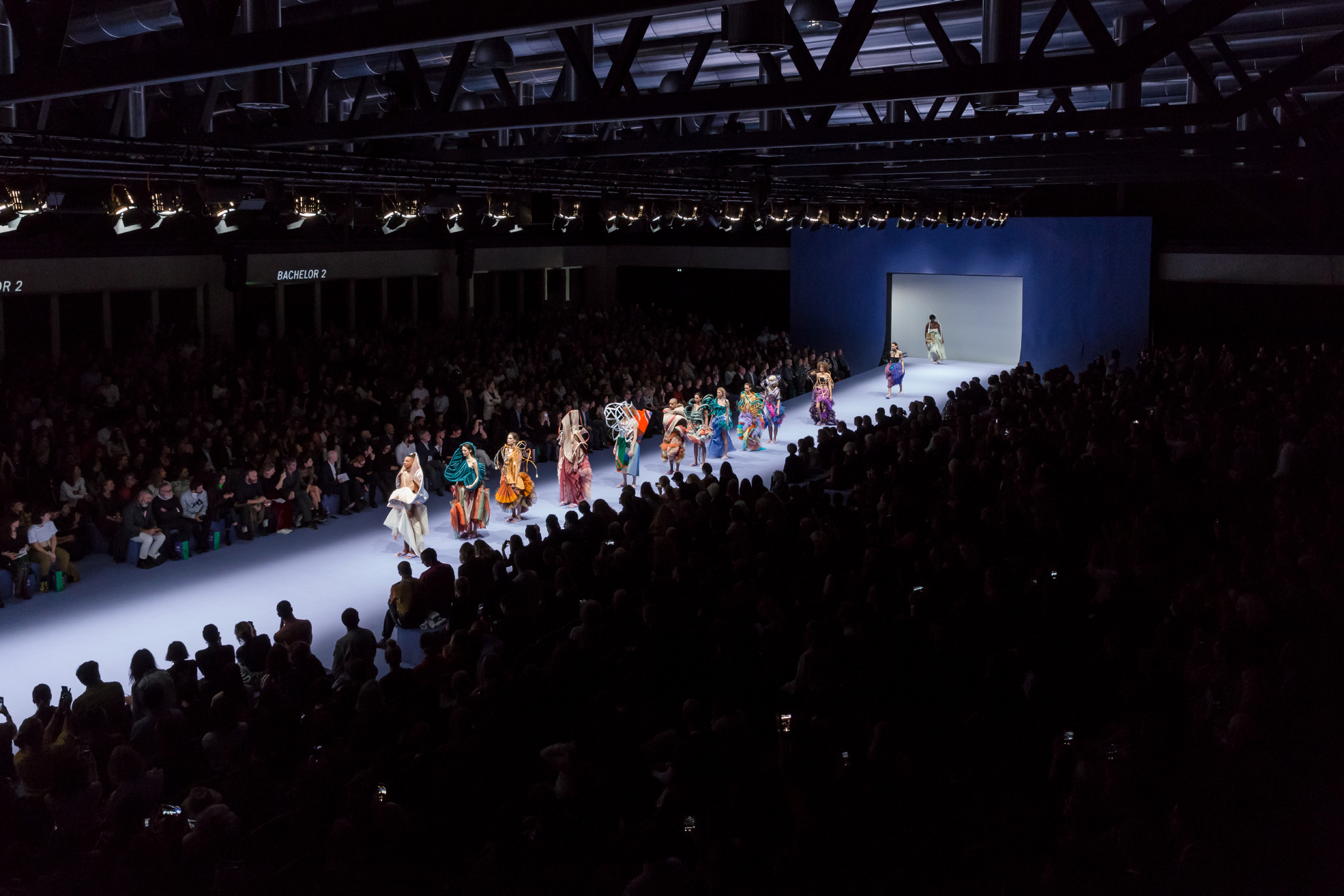 It serves an injustice to compare schools, or even rank them, however with confidence I can state that based on my conversations with renowned lecturers, touring the facilities, being introduced to the fashion programmes and an exceptional défilé, HEAD is a leading global arts institution. Its interdisciplinary approach organically sparks blue sky thinking and prioritises creativity based on the mastery of craft. HEAD makes the case that Switzerland - contrary to popular opinion- is indeed a legitimate and exceedingly influential fashion hotspot, worthy of increased international regard. Congratulations to all students on delivering buzz worthy collections; lecturers for pushing your students to break new ground; organisers for bringing the creations flawlessly to life; and especially congratulations to the supportive family and friends who motivate and inspire the young to follow their dreams. Bravo!
It serves an injustice to compare schools, or even rank them, however with confidence I can state that based on my conversations with renowned lecturers, touring the facilities, being introduced to the fashion programmes and an exceptional défilé, HEAD is a leading global arts institution. Its interdisciplinary approach organically sparks blue sky thinking and prioritises creativity based on the mastery of craft. HEAD makes the case that Switzerland - contrary to popular opinion- is indeed a legitimate and exceedingly influential fashion hotspot, worthy of increased international regard. Congratulations to all students on delivering buzz worthy collections; lecturers for pushing your students to break new ground; organisers for bringing the creations flawlessly to life; and especially congratulations to the supportive family and friends who motivate and inspire the young to follow their dreams. Bravo!
Onto a Gender Fluid Future
It has been more than 30 years since Jean Paul Gaultier first unveiled his monumental collection entitled “When God created Man” featuring big, brawny men in exceptionally tailored skirts. What was first interpreted as a severe provocation to the status quo, Gaultier helped revive the already established masculine legacy of the garment - which was worn by macho-men throughout history, from the Ancient Egyptians and Romans to the samurais and the Scots - for a post-modern era. Our connotation of the “man skirt” has shifted throughout history from ultra-masculine to ultra-feminine and is only one example how neither garments nor fabrics posses gender; gender codes are in the eye of the beholder.Symbolism and gender identities are constructed by temporal and spacial context, dependent on society and collective culture. Hence, clothing in itself is not gendered - our society is, where we collectively mould boundaries and artificial limitations onto the codes of fashion. Pink is not inherently feminine, neither are ruffles and lace - they are simply embellishments and neutral.
It is worth remembering it is us - the consumer- who defines fashion codes, not fashion which defines us.While Vivienne Westwood, Giorgio Armani, John Galliano, Rei Kawakubo, Yohji Yamamoto, Kenzo, and Marc Jacobs have consistently promoted a gender fluid vocabulary, the shift towards non-gendered fashion has become even more commonplace throughout today’s global fashion industry, catapulted to the mainstream conversation due to an Instawoke generation. As a consequence, institutions such as the CFDA have newly added the “unisex/non-binary” category to New York Fashion Week earlier this year, while half of the recognised designers at this year’s LVMH Prize shortlist exhibited gender-neutral collections including Ludovic de Saint Sernin and Charles Jeffrey. Delphine Arnault, founder of the Prize and leading talent at LVMH stated that “gender-neutral fashion, already present in former editions, has gained considerable ground, thus proving that the Prize echoes the recent evolutions in fashion.”
Equally, the Spring 2019 collections solidified the industry’s acceptance for gender-neutral fashion. Notably, Nicolas Ghesquière of Louis Vuitton offered a piercing presentation of exaggerated androgynous silhouettes and sci-fi prints. His futuristic vision of genderless fashion coincides with other creatives when imagining the (both utopian and dystopian) future. Think only of The Matrix which features super sleek sunglasses and floor skimming leather coats; the distressed blue coveralls of 1984; the rigid, metallic jumpsuits featured in countless sci-fi blockbusters worn by protagonists exploring the depths of galaxies far, far away. When lookingahead, futuristic fashion is arguably defined by utilitarianism, leaving distinctive gender codes behind.Another buzz worthy gender fluid Spring 2019 collection was Celine - sans è- reimagined by Hedi Slimane who added menswear to the roster through sharp New Wave tailoring. Slimane’s first press release for the brand stated “The entire wardrobe worn by the male models is unisex, and therefore will also be available for women.” Additionally, creative director John Galliano of Maison Margiela exhibited a gender bending collection dubbed “Co-ed” where deconstructed garments were worn by both men and women. Women wore zoot suits, while men donned skirts and dresses.
While visually stimulating, the collection provoked the question of why is it that when a woman dresses like a man, wearing a tailored, sharp suit she is perceived as powerful whereas, as seen here at Margiela, if a man wears a dress he looks as if he is wearing an attention grabbing costume? Despite all of the progress made in society regarding gender equality, a woman adopting male coded garments is accepted; a man adopting female coded garments is rejected and ridiculed.The most compelling brands offering gender fluid fashion steer away from gimmicky theatrics and instead stay true to a powerful well defined aesthetic. They radiate an authentic message which intellectually goes beyond gender constructs. One poignant example of successful gender fluid design is Louis Gabriel Nouchi, a graduate of the Ecole des Arts Visuals de la Cambre and winner of the Camper and Palais de Tokyo Prizes at the Hyères Festival 2014. With a predominant focus on knitwear and jersey, Nouchi offers a contemporary take on cut and silhouette merging crisp tailoring and leisure sportswear defined by function and craft. Through a refined lens on youth infused grunge, the brand disregards gender norms and lends male and female consumers the freedom to wear what they wish.
While I argue, there is still a purpose and beauty in traditional codes of men's and womenswear, embracing the tide of unisex fashion gives the consumer ultimately more choice over their identity and what they wish to communicate. The consumer holds the power to craft their own image, and holds the power to reject or accept design suggestions. Additionally, unisex fashion makes business sense by linking men’s and women’s shows together, thus offering a singularity in vision. However what does this mean for brands such as Louis Vuitton who have both a high profile men's (Virgil Abloh) and women's (Nicolas Ghesquière) wear designer? Will we see increased consolidation? Surely creative and managerial strategies will need to adapt. If the future of fashion is regarded as unisex, the future is indeed now.
From Fashion #Ad to a Post-Ad World
This season of September issues was exceptionally fierce, sending an important long overdue message for increased diversity at fashion’s forefront; most notably Beyoncè featured on the cover of American Vogue, shot by Tyler Mitchell, the first ever black photographer to shoot a Vogue cover. The relevance of a September issue is that it sets forward the moment’s dominant trends - culturally and sartorially- for the upcoming months, inspiring a myriad of consumers to turn to a fresh page and approach a new season with the confidence to define or perhaps evento reinvent oneself. It therefore is no surprise that September issues typically outweigh (literally) other issues due to the sheer volume of material, most of which, being advertising campaignsfound at the start of a magazine to persuade or influence the audience in some form.
Judith Williamson (1993) has called advertising campaigns as “one of the most important cultural factors moulding and reflecting our life today” and can be seen collectively as a “privileged discourse for the circulation of messages and social cues about the interplay between persons and objects” (Leiss, Kline, and Jhally, 1990).Having read my fair share of September 2018 issues cover to cover, there are several defining fashion advertising directions which have ultimately triggered the question of have we actually evolved into a Post-Ad world? The Ad as Entertainment Fashion films show no sign of slowing down, with today’s most renowned photographers such as Nick Knight or Sølve Sundsbo really pushing ground in this medium. For this season, it was Steven Meisel who captured the Givenchy moment at a bustling club (maybe Berghain in Berlin?) inviting the audience to partake on a crowded, darkened, glitzy dance floor through a cinematic lens. Also, Jil Sander publicised on Instagram a surreal 3 minute film by Wim and Donata Wenders, composed of repeating scenarios where the protagonists wear different looks from the Jil Sander autumn 2018 collection. Film excerpts were featured in print.
The Ad as Engagement Arguably one of the best “Ads” of the season would be from JW Anderson who earlier this year, held an open call for young photographers to partake in its Your Picture / Our Future initiative. Participants were asked to submit examples of their own work, with competition winners invited to shoot the AW18 campaign. After over 2,000 entries, Julie Greve, Simons Finnerty and Yelena Beletskaya were ultimately crowned the winners. Working together with Anderson, each young photographer was given an edit of the women’s and menswear collections, in order to bring their unique perspectives to the project.
The Ad as Editorial The most striking observation regarding this season’s fashion ads would be the blurred integration from commercial campaigns to creative editorials. Most obvious: the cover of American Vanity Fair September 2018 featuring the actress Michelle Williams against a blank maroon backdrop. Williams is an official ambassador to Louis Vuitton, and therefore appears in a variety of their own ad campaigns and typically wears the luxury brand on magazine shoots, as seen here. The shtick of the matter is that the cover is shot also by Louis Vuitton’s current campaign photographer Collier Schorr. So - the cover of Vanity Fair features 1) Louis Vuitton full look 2) Louis Vuitton brand Ambassador and 3) shot by Louis Vuitton Campaign Photographer. If it walks like a duck…Publications continue to blur the lines between commercial and editorial content however this cover may have just erased those lines completely. A Louis Vuitton spokesperson has labelled the brand-cover incident “a happy coincidence” speaking to the NYTimes, however a just as jovial coincidence has now been spotted on the freshly released October issue cover for Vogue China. The cover features Chris Lee wearing a Gucci dress and shot by Gucci muse, model andGucci campaign photographer Petra Collins.
Should we as consumers and aficionados of fashion be worried about this increased intersection between church and state?Sure there is the argument that we are losing creative integrity and the unique point of view ofindividual publications. But on the flip side, with the tidal wave of imagery - campaign, editorial, etcetera…- we are exposed to every day, is not everything essentially an #Ad?As brands increase in power, they do lend a voice to remarkable individuals such as a Collier Schorr who was one of the few photographers in fashion to speak out against Harvey Weinstein or a Petra Collins who is redefining the female photographer’s “girl gaze”. We are moving away from Ad’s in the traditional, dictating sense and moving to composed messages which span across all mediums, which inspire and entertain, and which directly engage with consumers and rising talent.Always look on the bright side, eh?
Home(ware) is Where the Heart is
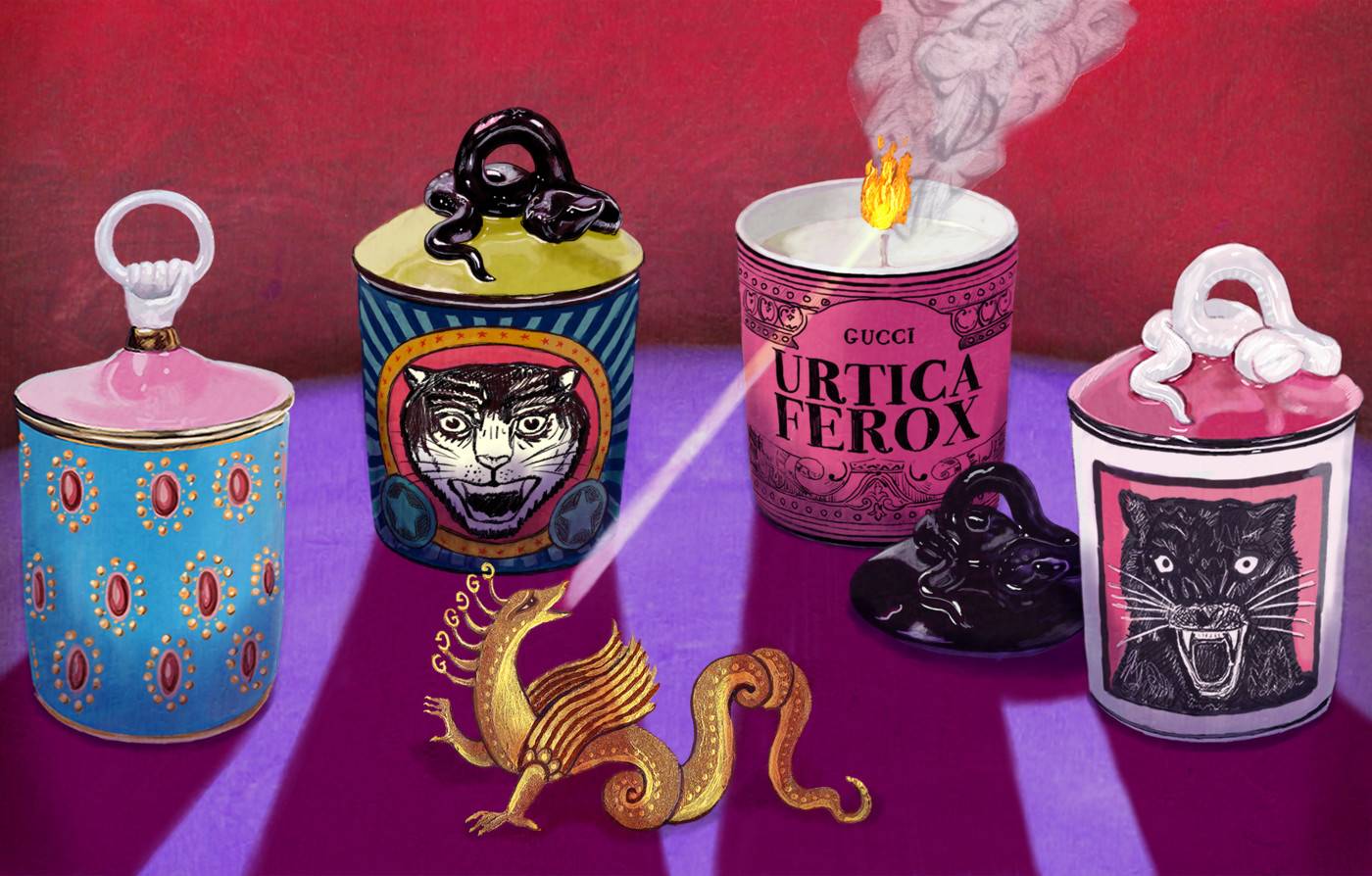 And as she clicked her sparkling ruby-red heels together three times, Dorothy recited blissfully “There’s no place like home”; a heartwarming sentiment applicable to those of us in and outside of Oz. It is equally regarded as a prophetic statement in terms of the newfound interest of luxury fashion brands investing heavily into the highly profitable homeware opportunity. Of course the bond between fashion and homeware is nothing novel, with brands such as Ralph Lauren Home (1983), Fendi Casa (1989), and Versace Home (1992) having already established a foothold - however there is renewed interest in the diversification of fashion, especially with the consumer’s holistic focus on “lifestyle”.
And as she clicked her sparkling ruby-red heels together three times, Dorothy recited blissfully “There’s no place like home”; a heartwarming sentiment applicable to those of us in and outside of Oz. It is equally regarded as a prophetic statement in terms of the newfound interest of luxury fashion brands investing heavily into the highly profitable homeware opportunity. Of course the bond between fashion and homeware is nothing novel, with brands such as Ralph Lauren Home (1983), Fendi Casa (1989), and Versace Home (1992) having already established a foothold - however there is renewed interest in the diversification of fashion, especially with the consumer’s holistic focus on “lifestyle”. 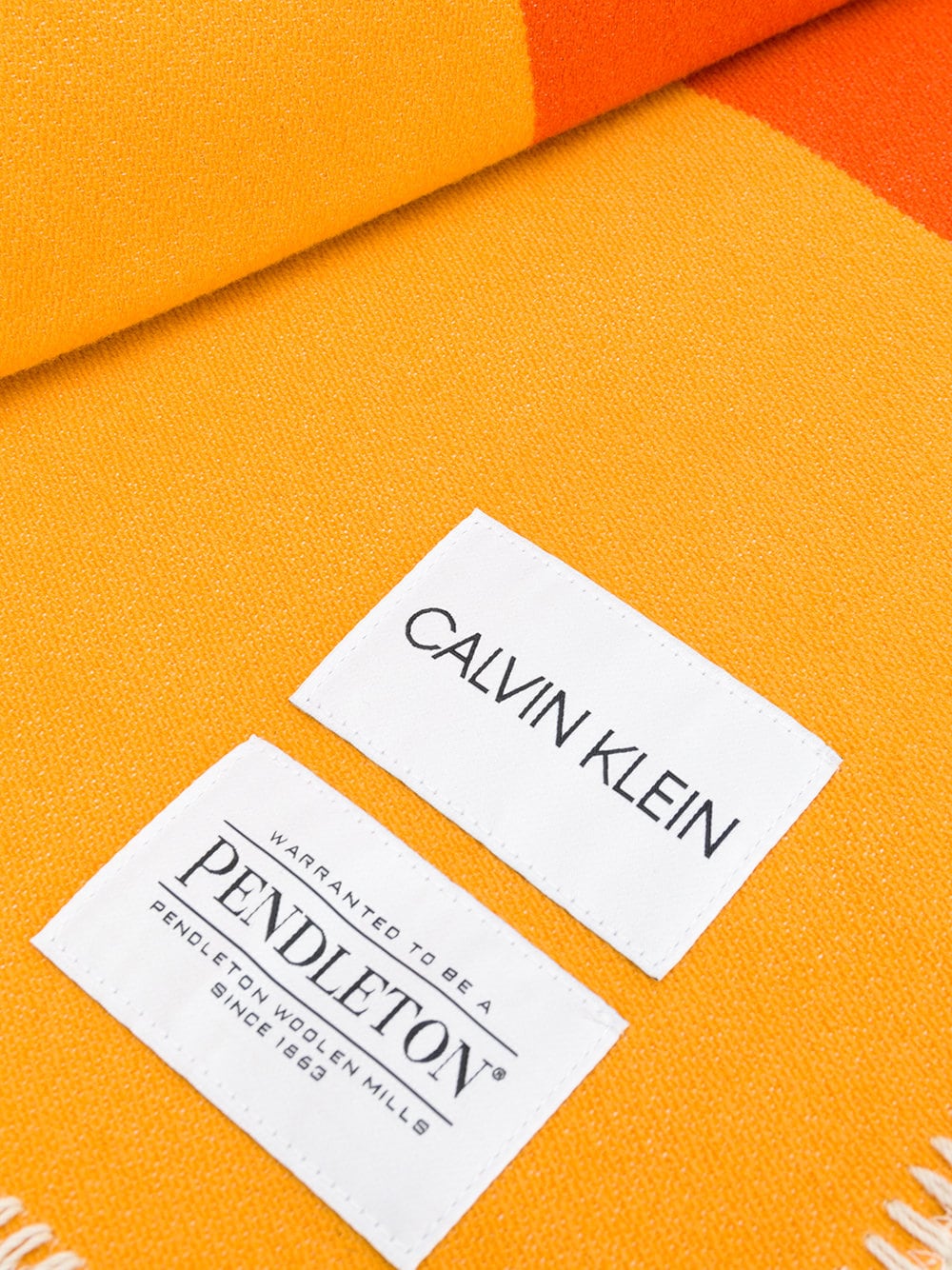 Last month, luxury e-tailer Matches Fashion introduced a homeware selection, offering a broad range of furnishings and decor from established traditional fashion brands including Peter Piloto, Preen by Thornton Bregazzi, Calvin Klein, Loewe, Maison Margiela and La Double J amongst others. Matches also offers a series of enamel Espresso cups and saucers born from an exclusive collaboration with artist Luke Edward Hall. The collaboration is a successful tried and tested strategy by other e-tailers who are also actively expanding into homeware. Most notably, Italian e-tailor Luisa Via Roma has collaborated with Matteo Cibic and Marcantonio Raimondi Malerba, while Moda Operandi has introduced a highly popular tabletop homeware collection produced with Cabana Magazine editor-in-chief Martina Mondadori Sartogo.Looking specifically at brands, Gucci continues to make headlines, in this particular case by having recently launched its Décor collection which includes candles, folding metal tables, armchairs, a vanity set and even wallpaper. The “must have” items are surely the Gucci- motif embroidered pillows, similar to the cushions we were first introduced to at the Cruise 2017 show at Westminster Abbey. The designs showcase extraordinary prints of fantastical flora, tigers, snakes and other mystical references deeply ingrained in the prominent Gucci vocabulary. The move by Gucci to tap into the homeware space makes perfect sense, as creative director Alessandro Michele has not only delivered a high caliber of seasonal clothing collections, but he has conjured an entire magical world, seducing us all to want to take part in this velvety, extravagant lifestyle.
Last month, luxury e-tailer Matches Fashion introduced a homeware selection, offering a broad range of furnishings and decor from established traditional fashion brands including Peter Piloto, Preen by Thornton Bregazzi, Calvin Klein, Loewe, Maison Margiela and La Double J amongst others. Matches also offers a series of enamel Espresso cups and saucers born from an exclusive collaboration with artist Luke Edward Hall. The collaboration is a successful tried and tested strategy by other e-tailers who are also actively expanding into homeware. Most notably, Italian e-tailor Luisa Via Roma has collaborated with Matteo Cibic and Marcantonio Raimondi Malerba, while Moda Operandi has introduced a highly popular tabletop homeware collection produced with Cabana Magazine editor-in-chief Martina Mondadori Sartogo.Looking specifically at brands, Gucci continues to make headlines, in this particular case by having recently launched its Décor collection which includes candles, folding metal tables, armchairs, a vanity set and even wallpaper. The “must have” items are surely the Gucci- motif embroidered pillows, similar to the cushions we were first introduced to at the Cruise 2017 show at Westminster Abbey. The designs showcase extraordinary prints of fantastical flora, tigers, snakes and other mystical references deeply ingrained in the prominent Gucci vocabulary. The move by Gucci to tap into the homeware space makes perfect sense, as creative director Alessandro Michele has not only delivered a high caliber of seasonal clothing collections, but he has conjured an entire magical world, seducing us all to want to take part in this velvety, extravagant lifestyle. 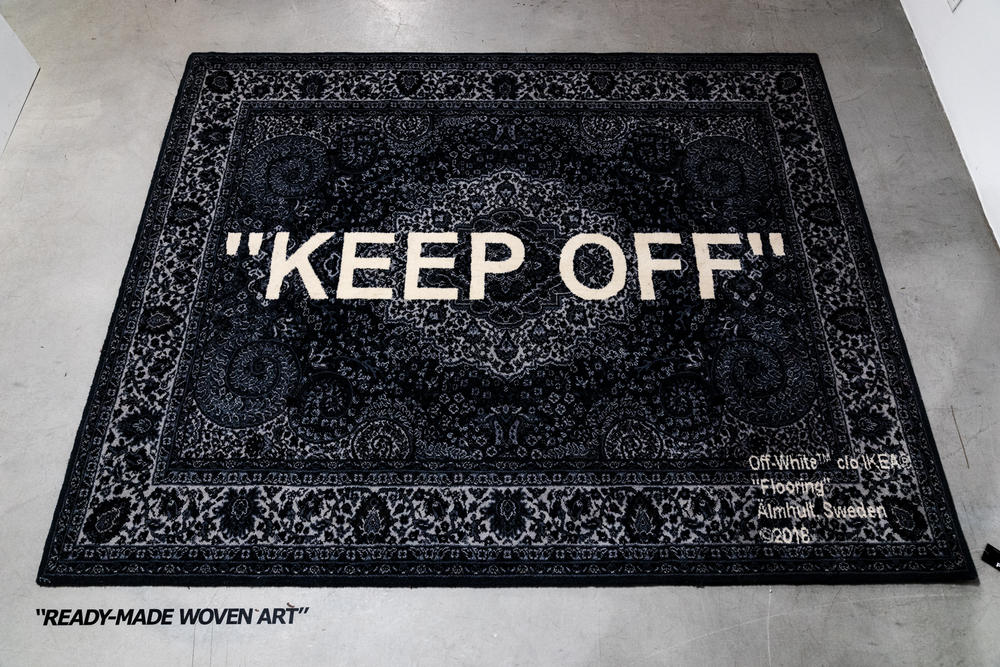 Another extremely influential creative director tapping into homeware projects is none other than Virgil Abloh - creative director of Louis Vuitton menswear and Off-White- who has recently produced a much hyped collection with Swedish furnishing powerhouse IKEA. The collection, which will be available for purchase in 2020, includes a series of self-referential rugs in Abloh’s established aesthetic and defining “AIRQUOTES”, as well as more complex pieces such as a Markerad chair with red wedges supporting the legs (although industry watchdog Diet Prada has called out the piece for being a copy of the iconic mid-century Paul McCobb design). Here, “high fashion” is made available to the mass market; a welcome gesture democratising zeitgeist design. The decision for fashion brands to expand into new categories is all but groundbreaking, however the rate in doing so does appear to be escalating in hopes to woo potential customers and drive sales. Although fragrance and cosmetics remain the biggest revenue drivers, the homewares segment is growing quickly with Euromonitor International expecting sales to grow 2.3 percent per year between 2017 and 2022, while Allied Market Research forecasts homeware to reach $27 billion by 2020, reinforcing a very attractive opportunity for growth.
Another extremely influential creative director tapping into homeware projects is none other than Virgil Abloh - creative director of Louis Vuitton menswear and Off-White- who has recently produced a much hyped collection with Swedish furnishing powerhouse IKEA. The collection, which will be available for purchase in 2020, includes a series of self-referential rugs in Abloh’s established aesthetic and defining “AIRQUOTES”, as well as more complex pieces such as a Markerad chair with red wedges supporting the legs (although industry watchdog Diet Prada has called out the piece for being a copy of the iconic mid-century Paul McCobb design). Here, “high fashion” is made available to the mass market; a welcome gesture democratising zeitgeist design. The decision for fashion brands to expand into new categories is all but groundbreaking, however the rate in doing so does appear to be escalating in hopes to woo potential customers and drive sales. Although fragrance and cosmetics remain the biggest revenue drivers, the homewares segment is growing quickly with Euromonitor International expecting sales to grow 2.3 percent per year between 2017 and 2022, while Allied Market Research forecasts homeware to reach $27 billion by 2020, reinforcing a very attractive opportunity for growth.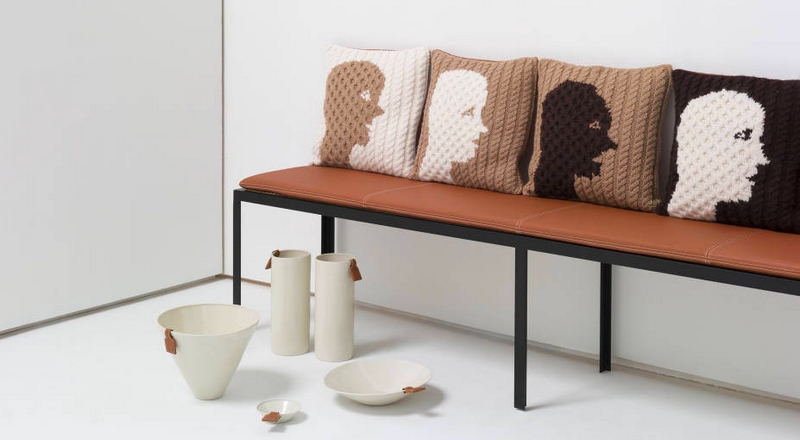 Style seeps into all areas of one’s life and chosen environment- clothing is only one singular piece of the puzzle and (the leading) fashion brands appreciate this- especially due to our preference for “experience” over goods. I say (or hope…) that the notion of style (something of longevity) has overshadowed “fashion” (something rapidly changing) and it is a 360* experience based on aesthetics, touch, smell, and sound, equaling a total sum of personal taste; thus interiors are of course the natural extension of personal style. The savvy luxury consumer buys into the dream - a dream which aligns with her own aspirations, desires, and taste and offers suggestions for the life which she pursues. Especially through a platform like Instagram which has skyrocketed our consciousness of actively building up our “ideal” lifestyle, there is no question that more luxury houses will continue to move into interiors, especially decor and home accessories. Living, breathing, feeling - as well as wearing- style are key to future growth and for the sake of fashion - make home where your heart (and your Gucci pillow) is!
Style seeps into all areas of one’s life and chosen environment- clothing is only one singular piece of the puzzle and (the leading) fashion brands appreciate this- especially due to our preference for “experience” over goods. I say (or hope…) that the notion of style (something of longevity) has overshadowed “fashion” (something rapidly changing) and it is a 360* experience based on aesthetics, touch, smell, and sound, equaling a total sum of personal taste; thus interiors are of course the natural extension of personal style. The savvy luxury consumer buys into the dream - a dream which aligns with her own aspirations, desires, and taste and offers suggestions for the life which she pursues. Especially through a platform like Instagram which has skyrocketed our consciousness of actively building up our “ideal” lifestyle, there is no question that more luxury houses will continue to move into interiors, especially decor and home accessories. Living, breathing, feeling - as well as wearing- style are key to future growth and for the sake of fashion - make home where your heart (and your Gucci pillow) is!














